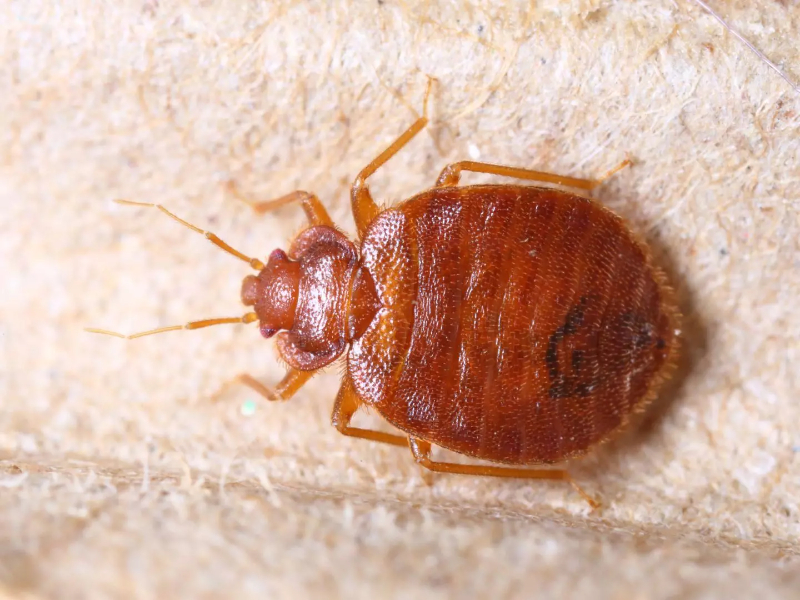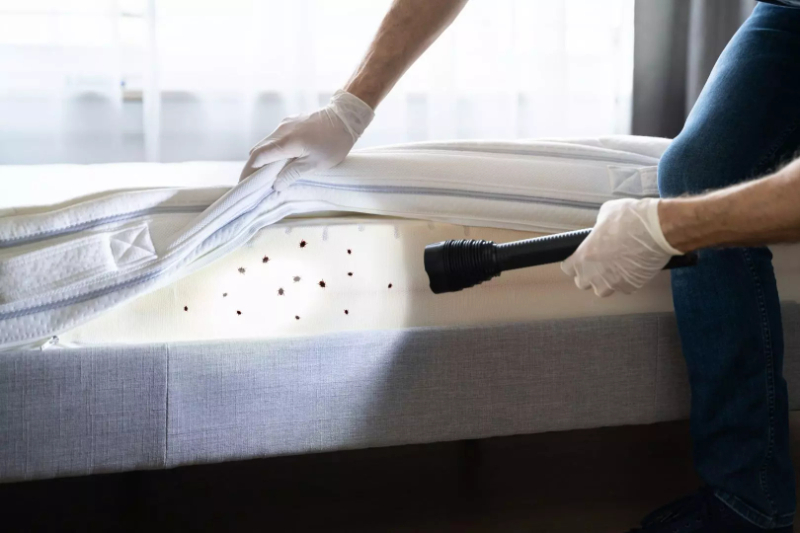This article asks: what is considered a major flea infestation? Red Tail Pest Control provide professional flea pest control for Stevenage, Hitchin, Hertford and Hertfordshire. We look at the signs of a flea infestation what causes a flea infestation and how many fleas are an infestation.
How Bad is the Flea Infestation in my Home?
If you have a furry buddy at home, it's crucial to keep them happy and healthy. Most people achieve this by letting them exercise during the day by running around outside. They can, however, bring a stranger home if they do this. It may be flea allergy dermatitis if they are losing their fur and scratching at an itch that won't go away. This is merely one of the early warning symptoms of a flea infestation.
A flea infestation can be started with just two fleas of the opposite sex. Fleas are blood-sucking parasites that produce red, raised bumps on your pet's skin; pay particular attention to the lower back and base of the tail as these locations frequently have the largest flea densities since your pets are unable to get them there.
Put the specks on a moist white paper towel and wipe them over the surface.
You may also separate the hair or comb the fur with a special flea comb. There is no question that those black specks are flea dirt or excrement if they become reddish-brown following contact with water drops.
Occasionally your pet is successful in removing the fleas from their skin, but don't rejoice too soon; this only indicates that some, if not most, are still living rent-free in your home.
Put on a white sock and drag your feet to check for flea infestation in carpet fluff or any place your pets prefer to hang out in order to keep an eye out for a female flea's ability to lay 20 to 50 eggs every day.
Look for fleas and flea eggs on your sock using a torch and magnifying lens.

The grass and plants in the garden should also be checked for flea infestations since fleas frequently remain quiet and wait for warm-blooded animals to walk through the grass they are living in.
Fleas generally prefer human blood over animal blood, but if you ever find clusters of red spots on your feet, ankles, or legs, you may have bugs on your sofa or bed. If you notice there are many red pimples on your skin, the flea infestation is out of your control.
Does One Flea Mean An Infestation?
Fleas are a common home bug that like to feed on the blood of dogs and cats but may also bite people. Only one of these aerial pests can launch itself from someplace in your garden onto your pet's body or even your pant leg and cling on until you or your dog or cat entering the house, resulting in an infestation.
These sneaky hitchhikers may lay up to 50 eggs each day in your house and yard, and they can breed within 24 hours of finding a host. So absolutely, a single flea may cause problems. Flea eggs often drop off your pet and land on carpets, furniture, and bedding - anywhere your pet spends time.

Fleas might get on your bed if your pet sleeps with you since their eggs hatch in just a few days.
While most fleas during peak season only live for around three weeks, these parasites can remain on their hosts for over a hundred days. Mature fleas are roughly one-eighth of an inch long and range in colour from brown to black.
A single adult flea may eat up to 15 times its body weight each day.
Fleas can transmit bacteria, viruses, and tapeworms, which means that a pet grooming itself could unknowingly swallow an infected flea, resulting in an even more serious infection.
Flea bites can also cause swelling and irritation on your pet's skin, resulting in bacterial infection and hair loss.
Fleas can transmit to raccoons and opossums that may visit your land once they have established themselves. After outdoor treatments, these animals might reinfest your yard, making it increasingly harder to control the flea population on your property. After fleas have entered your house, you must be diligent about treating your pet, your home, and your garden as well as putting in place a monitoring routine to make sure that these pests don't return.
What Causes a Flea Infestation?
Fleas may jump onto the fur of your pet from the fur of another pet or contaminated grass or soil outside. Fleas tend to hide in bedding, furniture, and floor cracks when they multiply, which can result in an infestation of fleas in your house.
Fleas like warm, damp environments to live and breed, thus infestations are typically greater in the summer. Fleas also like to linger on an animal's underbelly, making it easy for them to jump onto your carpet when your cat lies down. Although flea activity decreases throughout the winter, it doesn't entirely disappear since the warmth of your house offers the perfect setting for fleas to thrive.
How Many Dog Fleas Is An Infestation?
You could be tempted to dismiss fleas on your dog if you just notice a few of them. Even while the occasional flea can appear if you've just taken your dog for a walk, more than one or two could indicate a problem. As little as 20 fleas could indicate an infestation, and the maximum number could be 200 to 300.
Two adult fleas may produce hundreds of eggs and pupae, so ignoring a few fleas can soon result in an infestation on your dog and your home.
Within minutes of settling on your pet, fleas begin feasting on blood; after mating, a female can begin laying eggs in two days.
She will lay 27 or more eggs every day in your dog's fur in about four to nine days. The eggs may fall off into your carpet and other areas. Five to eleven days after the eggs are laid, the larvae can hatch from them.
They develop into pupae and can remain in a cocoon for weeks or even months. Another reason to act quickly is that the pupae are the toughest to destroy. It is thus advisable to treat the fleas before they reach this stage.

What are The Signs of a Flea Infestation?
The presence of many dot-like insects in your pet's fur, excessive scratching, licking, or biting of the fur, as well as the presence of a lot of brown and black debris all over the fur coat, can all be signs of a flea infestation. This is the flea faeces that is left behind after a blood meal. The infected region might cause your dogs to develop scabs or lose their fur.

Animals with flea infestations are also more prone to tapeworms since certain species of tapeworm employ fleas as their hosts, which can result in pale gums from blood loss.
Your pet probably has a flea infestation if you find tapeworms in its faeces. The most obvious sign that your dog or cat may have fleas is frequent scratching; when a dog or cat gets bitten, they tend to scratch or bite the affected region.
Fleas prefer to hang out in places where your pets can't readily get them, such as the neck and back of the head of animals with very thick hair.
Recall that animals often scratch constantly, but if they appear to be scratching continuously, check more closely.
As fleas run around so much, you'd probably never catch the little animal mid-bite. If you start seeing tiny little lumps, think about checking for fleas. Flea bites can give a little stinging sensation.
our dog or cat may experience allergic responses as a result of bites, and flea saliva can create red, irritated skin patches and painful-looking welts. Examine your pet's fur closely if you observe any of these skin changes. To avoid picking up any fleas on yourself, make sure to check their armpits and groin first.
Are you experiencing a flea infestation in the Stevenage or surrounding Hertfordshire areas?
If you are worried that your property has a flea pest problem or infestation we can help.

